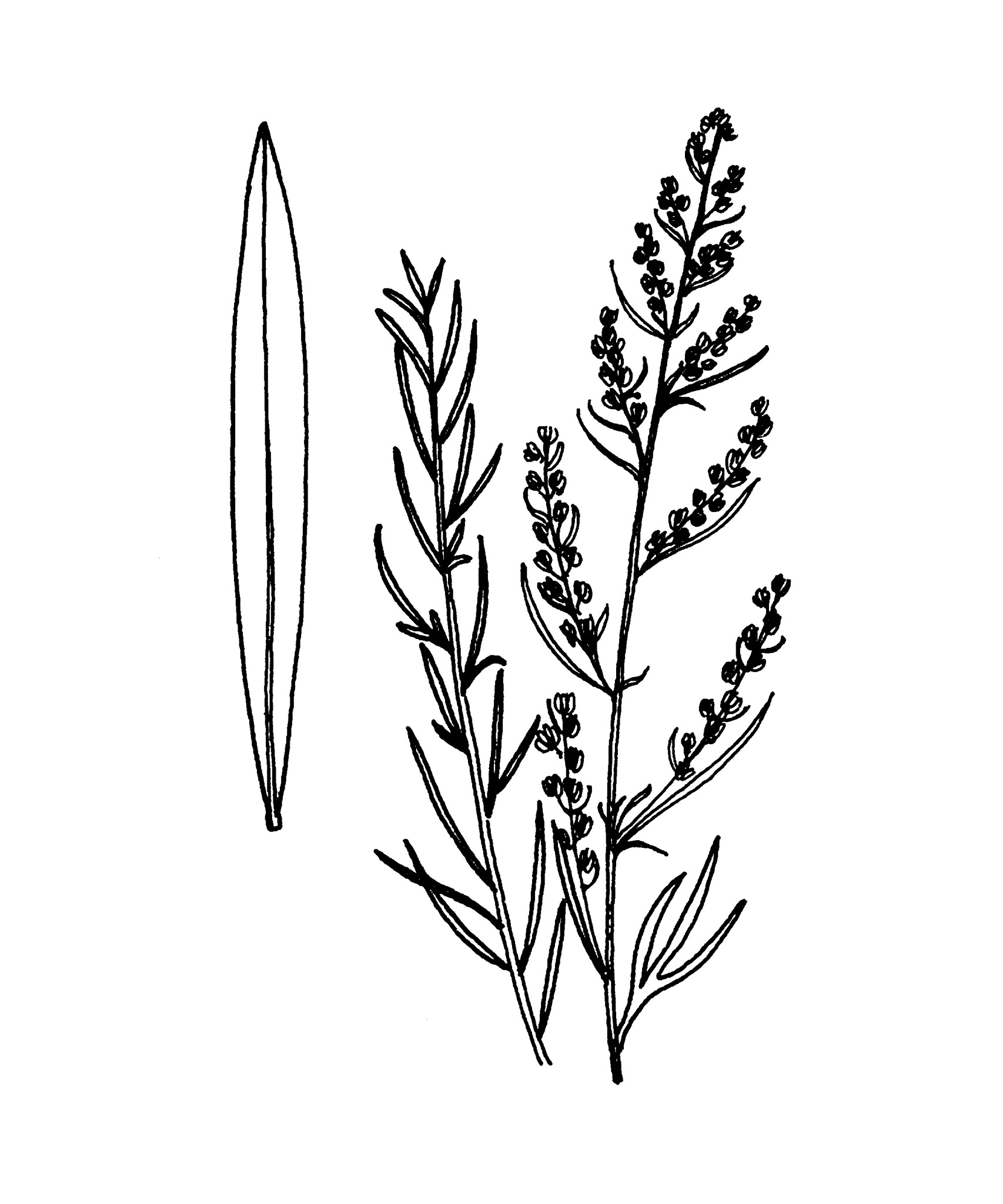
Erect perennial shrub to 2 m tall, glabrous. Stems much-branched. Leaves basal and along stems, to 10 cm long, entire or slightly toothed, glabrous. Capitula about 3 mm across, in spreading panicles; summer. Receptacle glabrous. Inner involucral bracts with membranous margins. Florets yellow.
Eurasia
Widely cultivated for flavouring. A distinction is sometimes made between French Tarragon and Russian Tarragon, the latter listed as the N American A. dracunculoides Pursh., a more vigorous plant with a less appealing flavour. The true identity of Russian Tarragon is uncertain but it is probably a variant of A. dracunculus.
Other species with entire or toothed upper leaves are:
A. lactiflora DC., White Mugwort, from China, a shrub to 2 m tall with large divided lower leaves (upper leaves sometimes also divided) and tiny capitula with milky white florets;
A. ludoviciana Nutt.,Western Mugwort, White Sage, from Canada and W USA, a rhizomatous shrub to 1 m tall with lobed or toothed lower leaves and small capitula (about 3 mm across) with yellow-brown florets - cultivars listed are A. 'Silver Queen' which grows to about 70 cm tall, A. 'Silver King' which grows to about 1m, and A. 'Valerie Finnis' to 60 cm tall with cut leaves;
A. candicans Rydb. [A. ludoviciana Nutt. var. latiloba Nutt.] from W USA, which differs in having the lower leaves once or twice divided and larger capitula (5-8 mm across).
Source: (2002). Asteraceae. In: . Horticultural Flora of South-eastern Australia. Volume 4. Flowering plants. Dicotyledons. Part 3. The identification of garden and cultivated plants. University of New South Wales Press.
